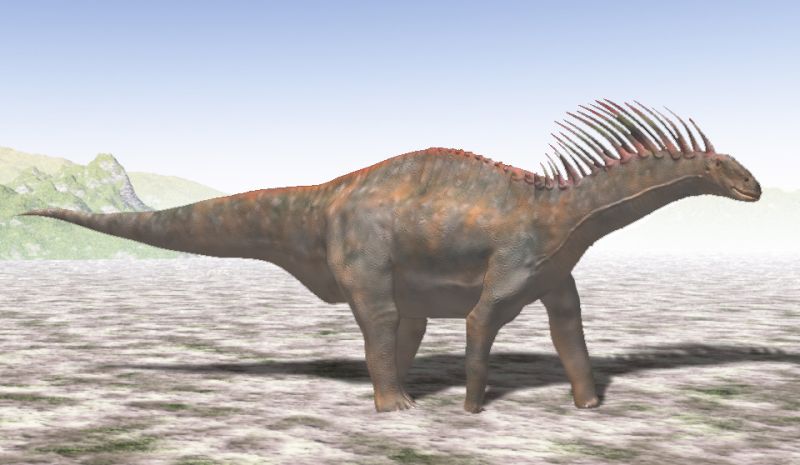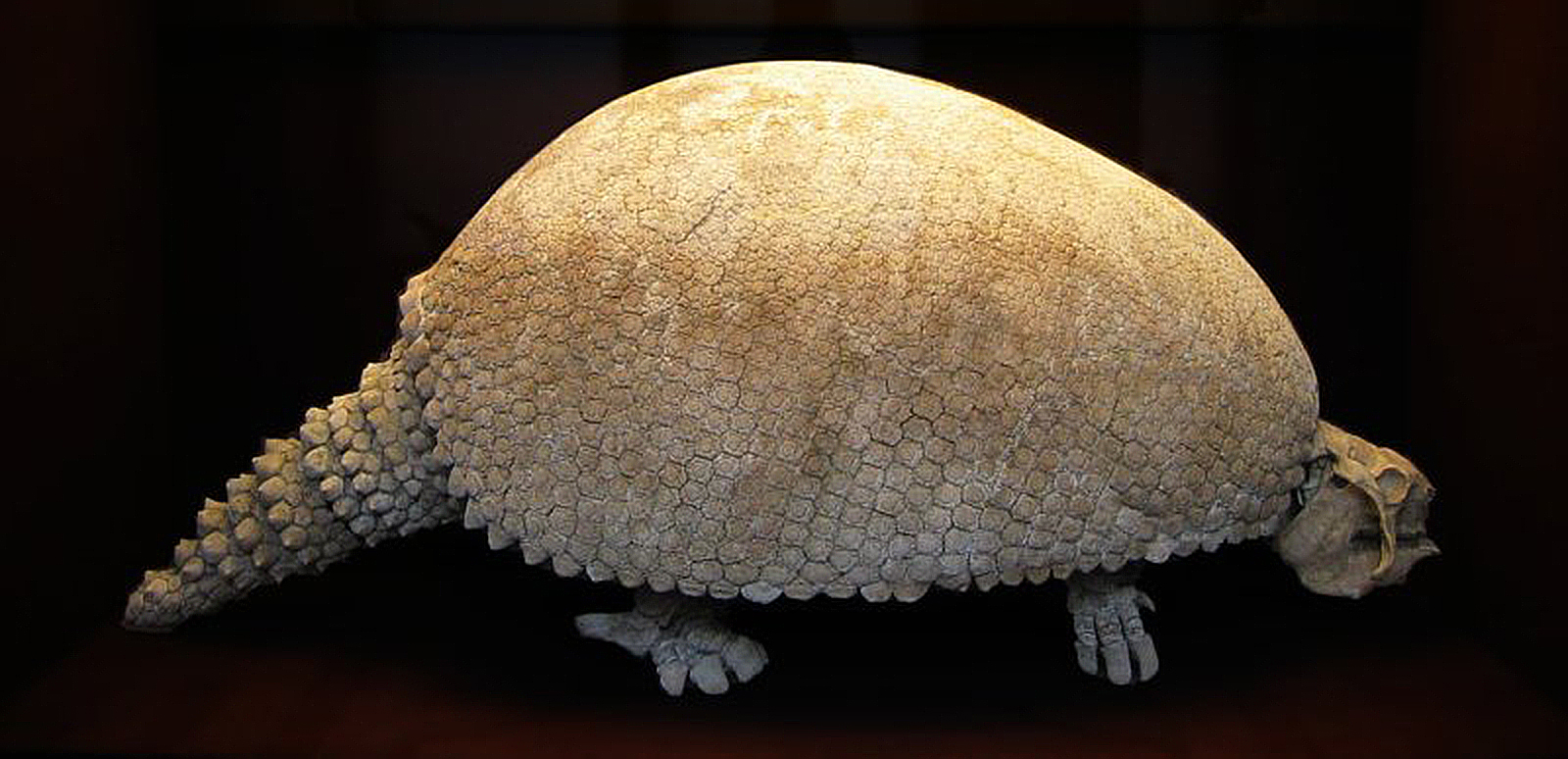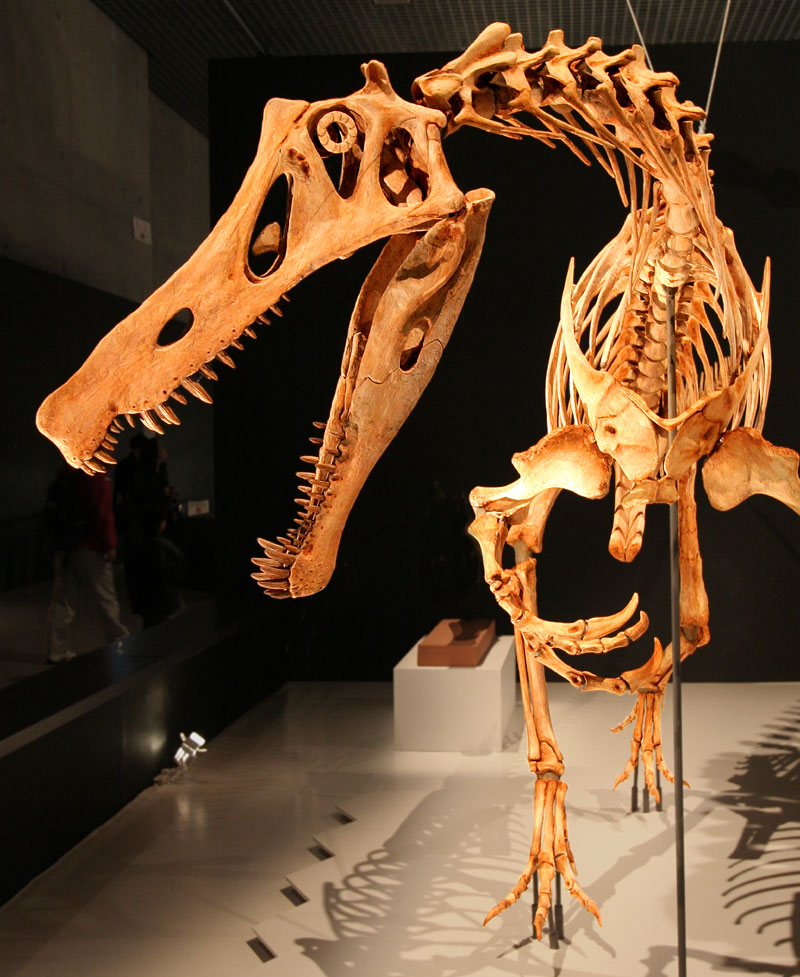Claire Zabel
The Glyptodontidae are the ancestors of the Pantanal's modern Giant Armadillos, although they were a bit gianter (approximately the size of a car). They were herbivorous, and defended themselves from predators by being very large, heavy, and hard to bite.
 Amargasaurus (the bitter lizard) is a dinosaur's dinosaur. It was about ten meters long. It liked browsing on grass, the early Cretaceous period, and clattering its long neck-spines to strike fear in the hearts of its enemies.
Amargasaurus (the bitter lizard) is a dinosaur's dinosaur. It was about ten meters long. It liked browsing on grass, the early Cretaceous period, and clattering its long neck-spines to strike fear in the hearts of its enemies.
The genus Irritator was commonly found in Brazil and lived about 110 million years ago. Martill et al. (1996) said the name Irritator came "from irritation, the feelings the authors felt (understated here) when discovering that the snout had been artificially elongated." Basically, the original fossil-finders tried to make the skeleton look cooler with car body filler and it didn't go so well.



After reading your post, I found myself most interested in the Glyptodontidae. If it was so well protected from predators, what would cause it to go extinct? Apparently, many megafaunal species species died out at the end of the last ice age. Why? The verdict is still out. Some argue climate change, other disease, others human predation, and others competition of resources. Interestingly, their smaller relatives were able to survive and remain alive today.
ReplyDelete